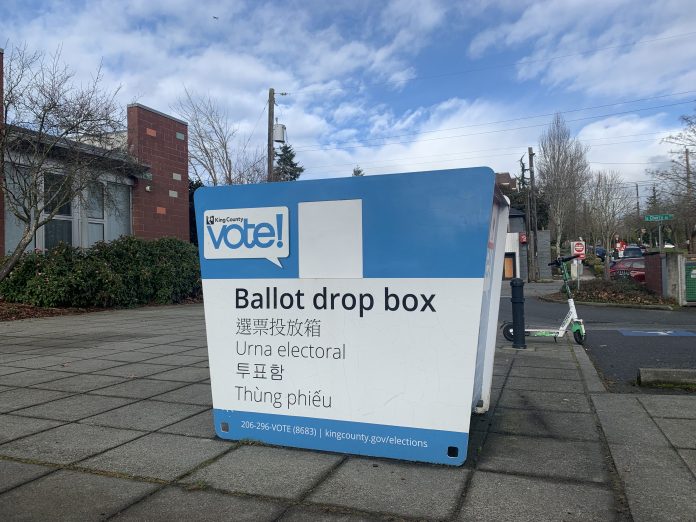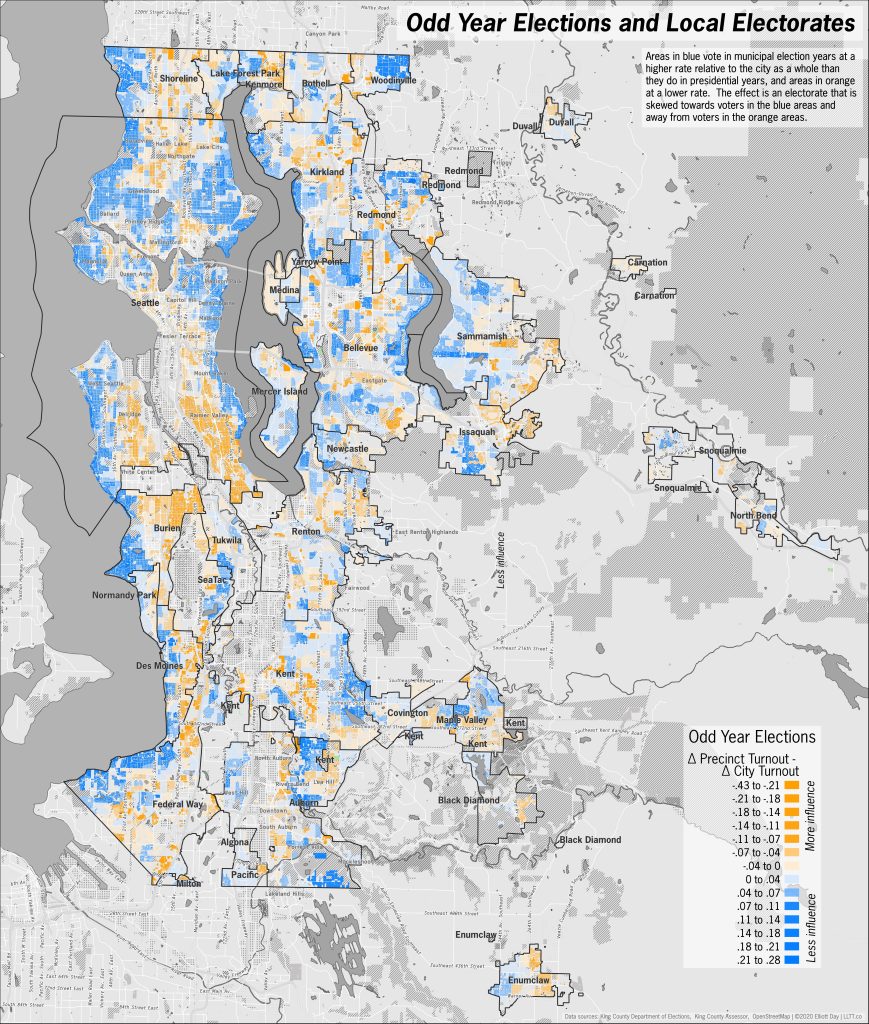Municipal and county elections are held on odd years in Washington State, but some lawmakers want to change that. Rep. Mia Gregerson (D-SeaTac) introduced House Bill 1727, which would move local races to even years. The bill has eight co-sponsors and has already passed out of local government committee on Wednesday. It was referred to the rules committee on Friday.
“It’s one of the most important, I think, pieces of policy that we can be considering this year,” Gregerson said before the committee vote. “We know over and over every year during the odd year that we have half the number of people turning out to vote. These are extremely important elections. They’re making decisions for everyday people.”
A look at recent election data shows that odd-year elections empower a smaller electorate more heavily weighted toward wealthier areas to decide important local races. Even-year elections, when federal and state offices are on the ballot, simply have higher turnout that is more representative sample of the populace, so having local races decided those years would be more democratic and fair. Since 2010, Washington State has averaged 43% turnout in odd years, compared to 74% in even years. That’s a lot of missing votes in local races.
Elliott Day, who was campaign manager for Mohamed Egal’s successful SeaTac City Council campaign last year, put together some maps and analysis which show that the odd-year hit to turnout is not uniform across the board. Wealthy neighborhoods see a much smaller drop off all across King County, which means their influence goes up.
The Urbanist covered the remarkably high turnout in wealthy single-family areas in Seattle’s recent election, and the comparatively low turnout in working class areas. Day’s map confirms this pattern and shows where it stands in contrast to the 2020 presidential year when electoral turnout was high across board.
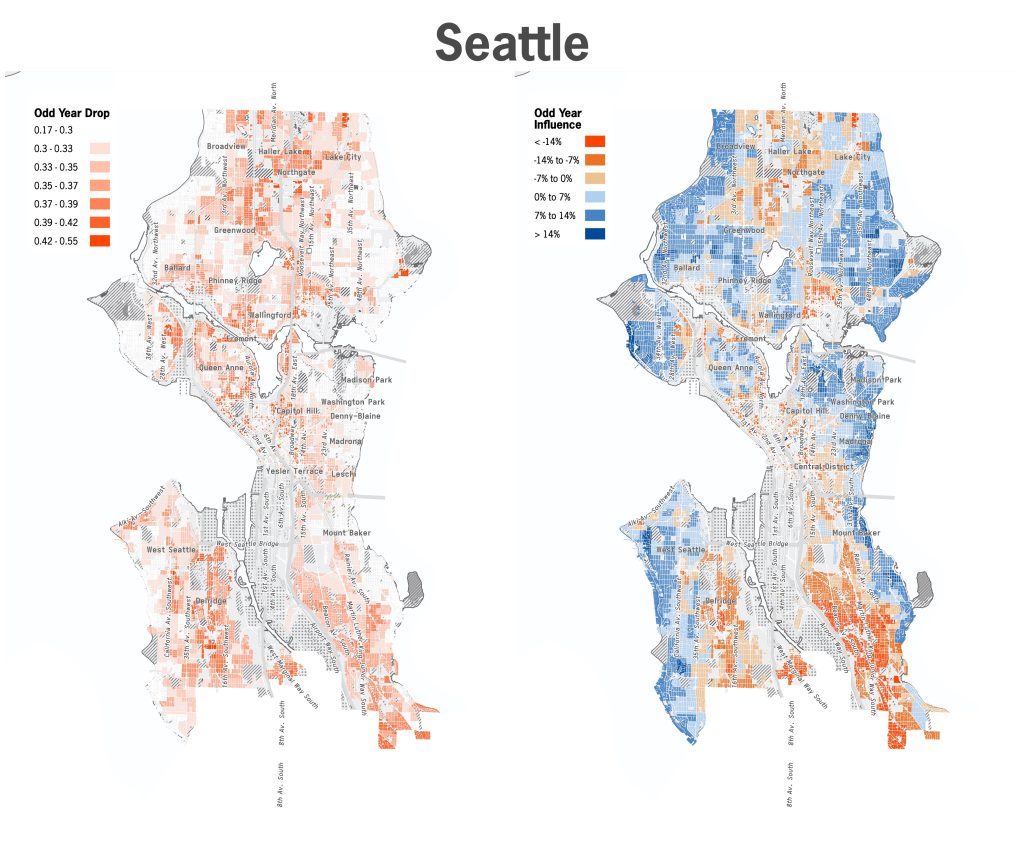
The pattern is consistent all over the county, as shown in the maps below which illustrate the shift in the electorates of Shoreline, Renton, Mercer Island, and Bellevue. Turnout cratering in lower-income and tenant-heavy areas and holding steady in the wealthiest corners of the county likely makes it easier for certain kinds of candidates to win and for certain issues to gain salience and attention.
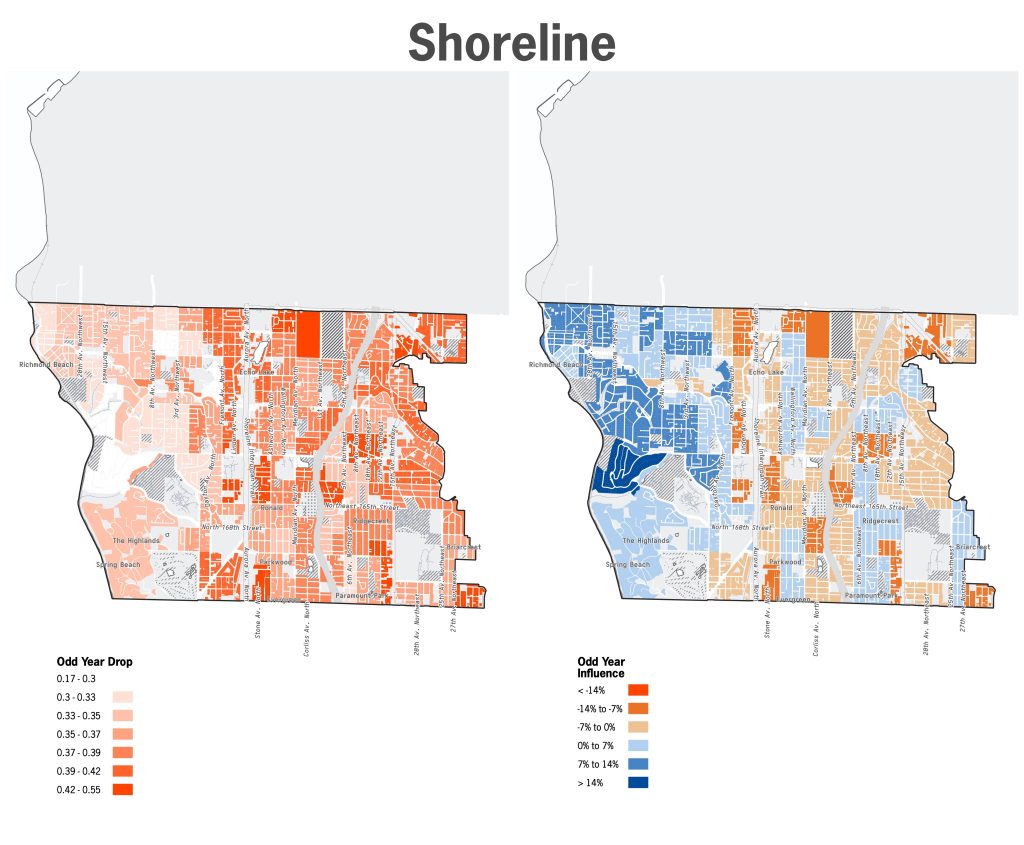
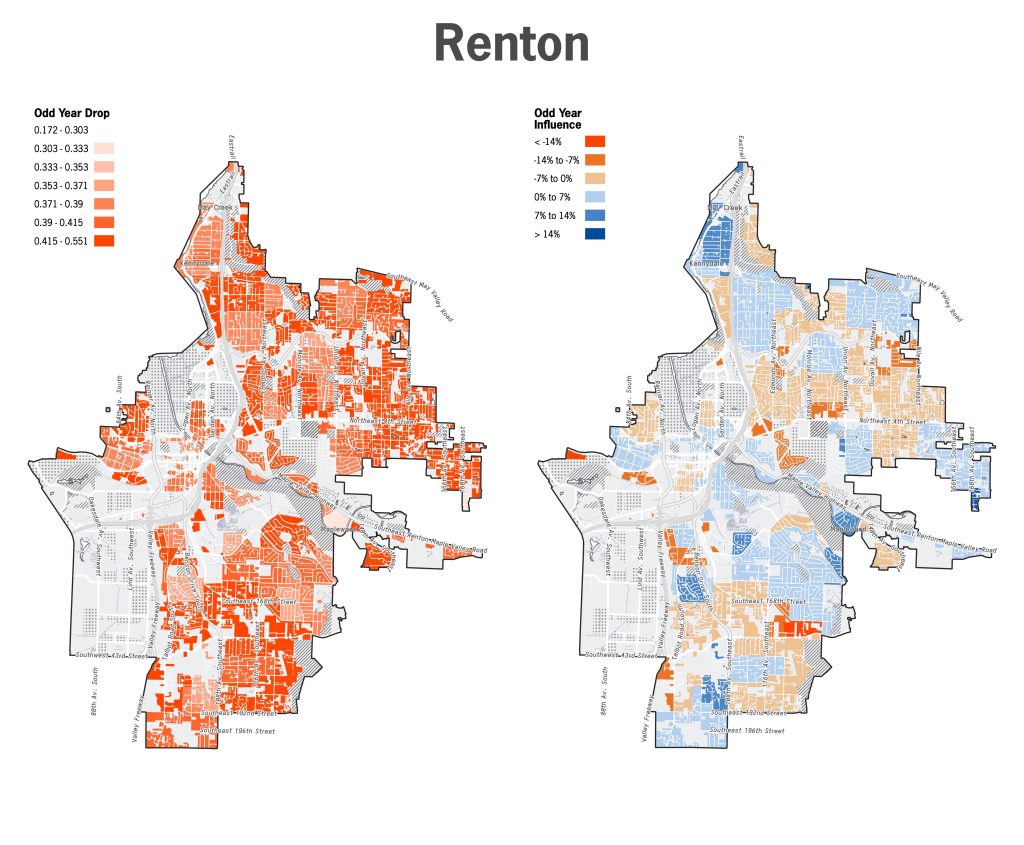
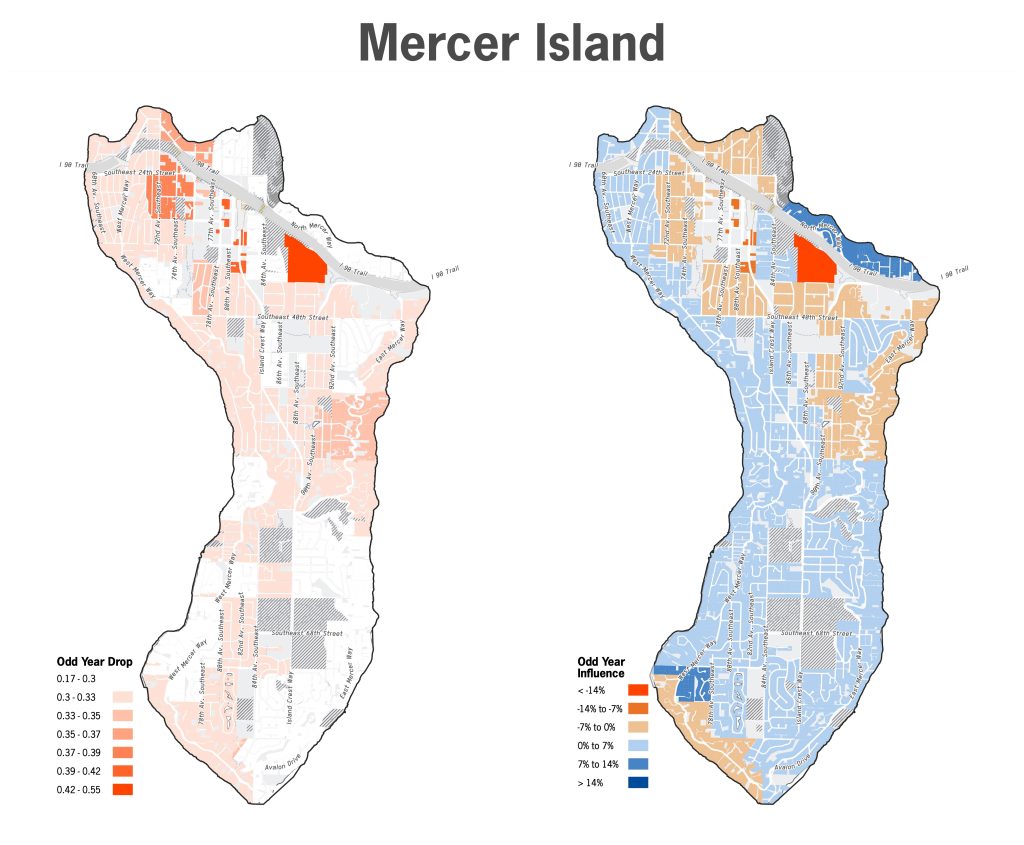
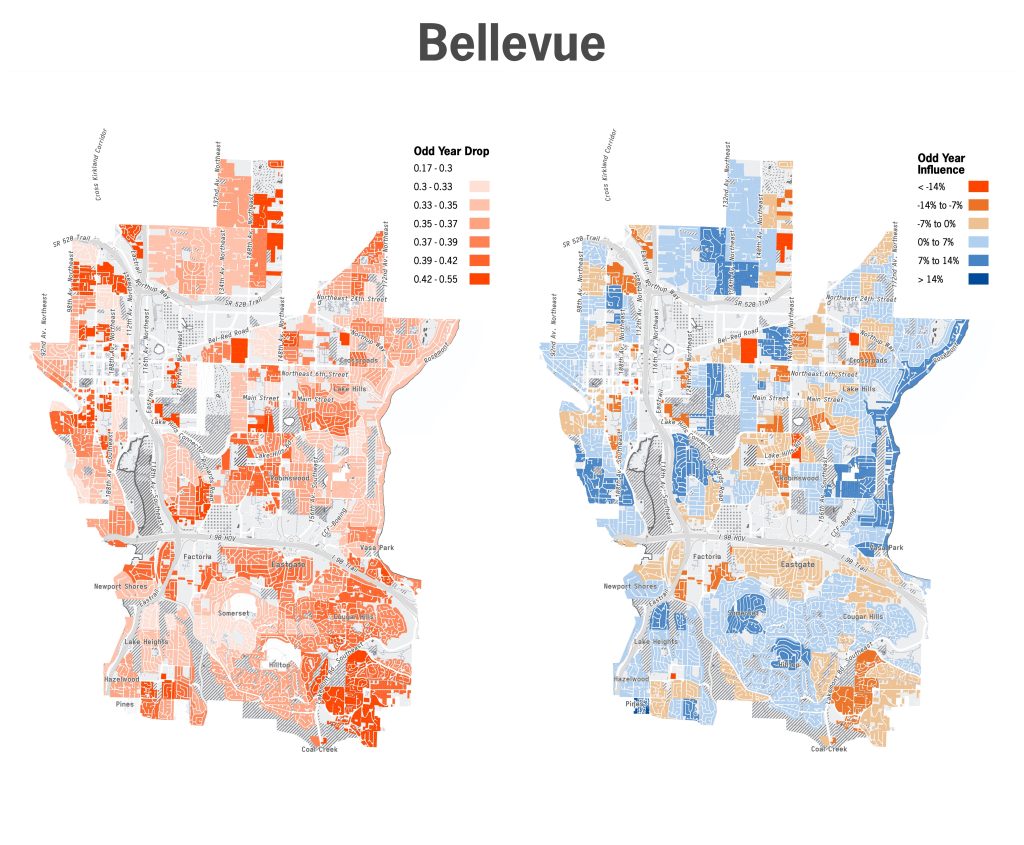
Day’s analysis quantified the impact on the tenant vote countywide and also found a strong correlation between appraised land value and influence in odd-year elections.
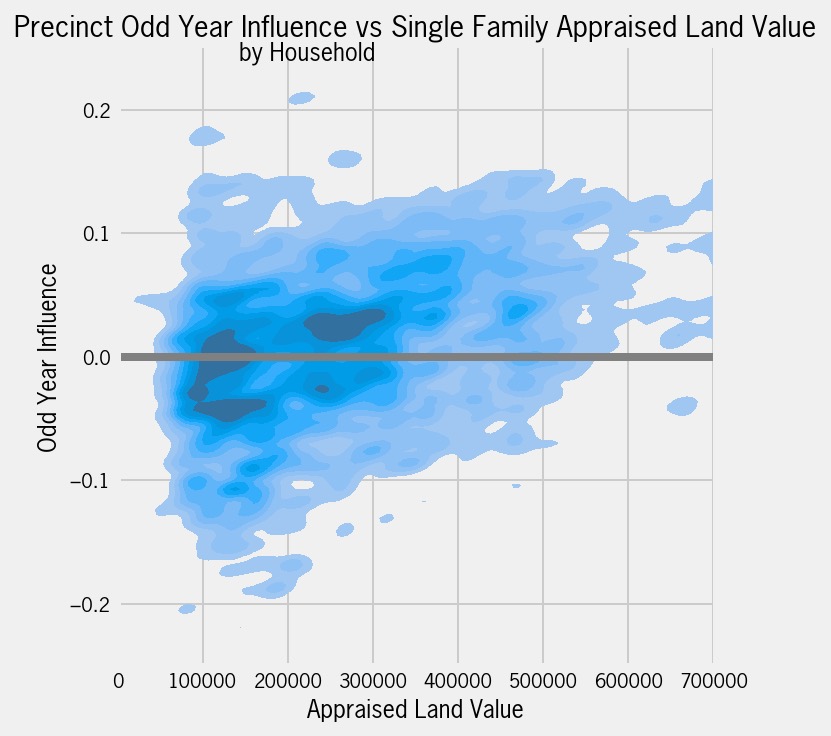
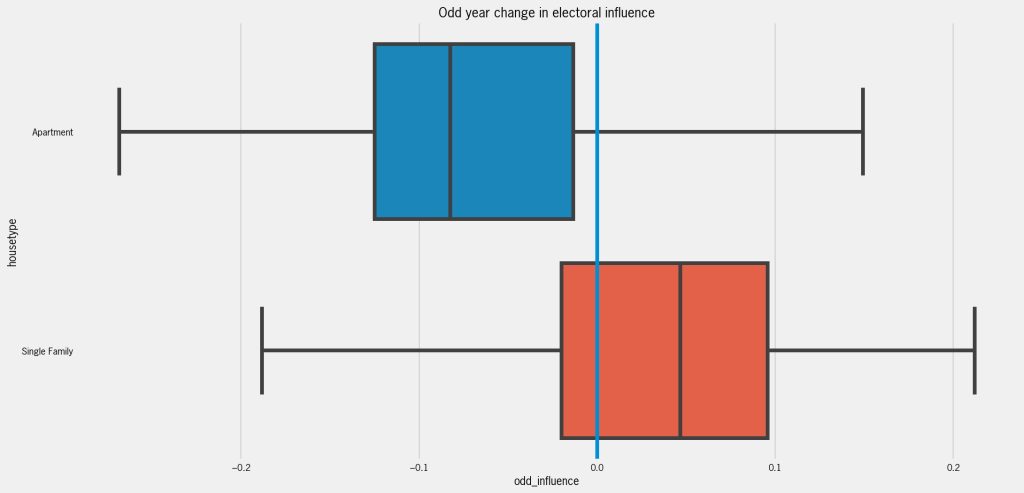
Moving local elections to even years would be an easy fix to encourage higher participation and address this structural flaw in our electoral system.
Critics, including some of Gregerson’s Republican colleagues on local government committee, argue voters who don’t vote in odd years are just “lazy” and should get their act together. Some also argue the current arrangement helps provide work for political professionals and consultants in odd years and prevents a logjam scenario when mayors, councilmembers, county executives, county councilmembers, state legislators, federal legislators, statewide officeholders, and presidential campaigns would all be vying for attention, campaign contributions, and ad space at the same time. The ballot would also get even longer in even years, which could push past voters’ attention spans, critics argue, causing them to skip lower profile races or races simply listed later in the “crowded” ballot.
But these complaints don’t outweigh the benefits of higher voter participation in municipal and county races that are highly influential in people’s lives. More people vote in even year elections and it is a more representative sample.
“It is more cost-efficient; it’s better government,” Gregerson argued in committee deliberations. “When more people vote, we have a better democracy, more transparency, and better decisions.”
The importance of these local races is only growing as cities and counties rise to the occasion to address major problems neglected by a gridlocked Congress and Republican-hijacked courts. Issues ranging from climate action, gun control, criminal justice reform, pollution, transit disinvestment, runaway housing costs, gaping wealth inequality, and traffic safety are increasingly tackled on the local level. Campaign infrastructure can and will adjust to new circumstances and need not be an excuse for willfully holding low-turnout elections out of a misguided sense of tradition.
Conservatives may argue progressives are trying to tilt the scales in their favor, but an even-year electorate wouldn’t have changed the outcome of the mayoral race given Mayor Bruce Harrell’s resounding 17-point victory. Moderates and conservatives can still win in even years, but issues facing tenants and the poor wouldn’t be so likely to be overlooked.
Northwest Progressive Institute (NPI) has made passing even-year elections one of their top priorities for the 2022 session. They commissioned a poll on the idea and found strong support: 52% support to just 24% opposition. In making the case, NPI’s Andrew Villenueve noted that voting patterns between even and odd years have only further diverged in recent years.
Turnout in odd-numbered years has continued to be awful even as turnout in even-numbered years has gone up. Washington saw very healthy turnout in both the 2018 midterm and 2020 presidential cycles, aided by prepaid postage on ballot return envelopes, more drop boxes, and the availability of same-day voter registration. Voting has only gotten easier in Washington, yet voters are not voting consistently. They’re sending a message: Fewer elections, please!
We need to listen.
As the old adage goes, less is more. And in this case, less is better, too.
We will see greater and more consistent participation across local elections if we pass this bill. All of the data we have, including this new polling and the voter turnout data I just mentioned suggests that voters want this change.
Andrew Villenueve, Northwest Progressive Institute
Communities of color suffer the most from this political paralysis on these issues, and their influence is stunted by odd-year elections. Young voters will reap the consequences of our inaction on climate and environmental destruction and they’re in the crosshairs of the housing affordability crisis. Unfortunately, they are the voting demographic most disadvantaged by our odd-year setup. It’s not a recipe for success.
It’s better to meet voters where they are at rather than to throw up obstacles. The broader consensus we can form to tackle the huge problems before us, the better off we will be as a society. Even-year local elections are a necessary step in the right direction.
Comment on the bill to convey your support to your legislators.
Doug Trumm is publisher of The Urbanist. An Urbanist writer since 2015, he dreams of pedestrian streets, bus lanes, and a mass-timber building spree to end our housing crisis. He graduated from the Evans School of Public Policy and Governance at the University of Washington in 2019. He lives in Seattle's Fremont neighborhood and loves to explore the city by foot and by bike.


